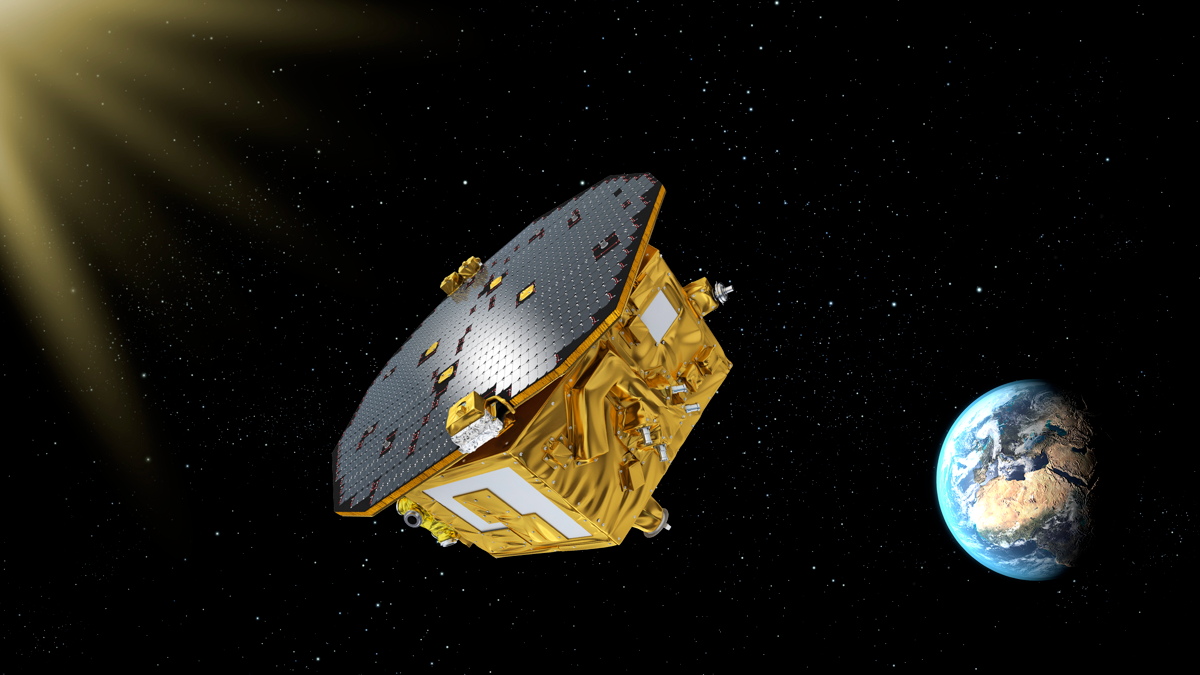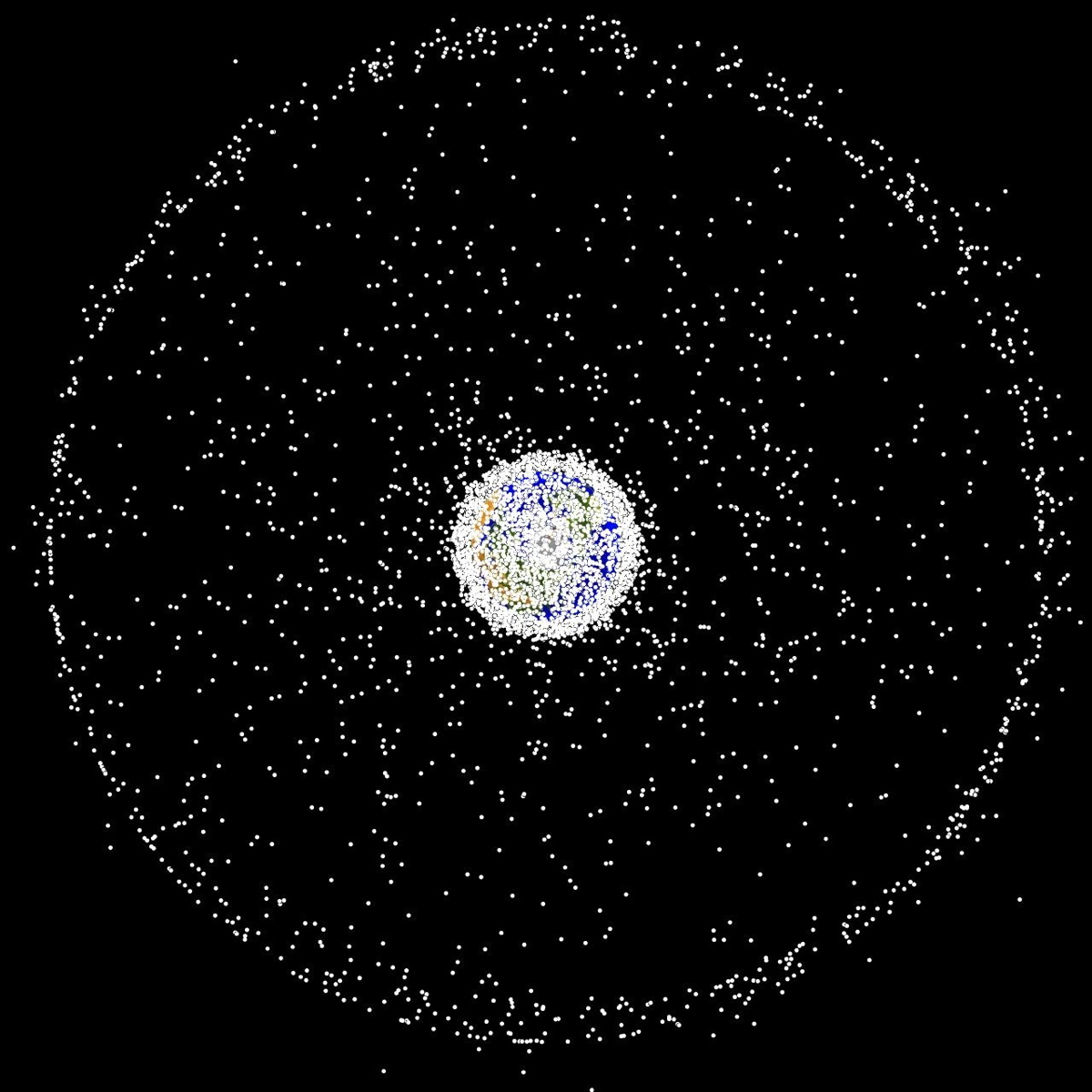Space-Time Experiment Could Study Hazardous, Speedy Space Rocks

A spacecraft built to help search for ripples in space-time could also count up the number of tiny space rocks that pose a potential hazard to satellites and spacecraft that orbit the sun.
Micrometeoroids — those that are about the size of a pea or smaller — regularly pepper satellites and spacecraft that venture off the surface of the Earth. If those bits of space rock or shards of space junk are traveling fast enough (and they can reach speeds of up to 22,000 miles per hour), they can tear through expensive space hardware or even spacesuits. Therefore, some scientists are interested in determining the average number of these micrometeoroid collisions that a spacecraft or astronaut can expect to experience.
Though the designers of the Laser Interferometer Space Antennae (LISA) Pathfinder spacecraft never intended their instrument to be used for this purpose, a group of scientists has found a way to get a little extra science out of the experiment. [The Search for Gravity Waves in Images]
An experiment in free fall
The European Space Agency's LISA Pathfinder probe launched into orbit in December 2015. The spacecraft is testing technologies that will be used on the the full-fledged eLISA mission, which was designed to search for ripples in space (and time) itself, also known as gravitational waves. (eLISA is not scheduled to launch until the mid-2030s). Albert Einstein predicted the existence of these waves a century ago, but scientists only directly detected them for the first time last year, using the ground-based Laser Interferometer Gravitational-Wave Observatory (LIGO), which announced the finding in February.
At the heart of LISA Pathfinder (and eLISA) is an instrument that floats in weightlessness, completely undisturbed by outside stimuli. In that peaceful state, it can detect the very slight change in space created by a passing gravitational wave. The exterior of the Pathfinder probe serves as a sort of shell to protect the central instrument. It absorbs and corrects for outside stimuli, such as the gravitational pull of nearby planets or the push from the particle wind that blows off of the sun.
Ira Thorpe, an astrophysicist at NASA's Goddard Space Flight Center and part of the LISA Pathfinder team, realized that the spacecraft's ability to detect very small forces might make it a good micrometeoroid counter. He spoke about this ancillary application for the spacecraft at the American Physical Society's April meeting on Sunday (April 17) in Salt Lake City. Earlier this year, Thorpe co-authored a scientific paper outlining his idea.
"The whole [LISA Pathfinder] system was designed to reject these kinds of noises," Thorpe told Space.com, referring to the movement of the spacecraft created by collisions with micrometeoroids. Typically, Thorpe said, the system would immediately counter micrometeoroid disturbances, and their appearance would just be part of the "noise" that the system tries to reject. But, through some "auxiliary channels," he and a few colleagues think they can pull out the individual micrometeorite events.
Get the Space.com Newsletter
Breaking space news, the latest updates on rocket launches, skywatching events and more!
Micrometeoroids are generally said to be about less than 1 centimeter (0.39 inches) across and/or to weigh less than 1 gram (0.035 ounces), according to NASA. However, there is no exact boundary between a meteoroid and one of its "micro" siblings. The average estimated speed of micrometeoroids is about 6.2 miles per second (10 kilometers per second), according to NASA, or about 22,000 mph (35,405 km/h). These very-fast-moving micrometeoroids can potentially tear through scientific instruments, and modern spacesuits even have a layer built in to protect against micrometeoroids.
There are various estimates of how frequently a space-based instrument should expect to be pelted with these space BBs. However, those estimates are based on observations of micrometeoroids in the vicinity of Earth, Thorpe noted, where the gravitational pull of the planet influences their path. LISA Pathfinder is orbiting the sun at a location known as Lagrange Point 2 (or L2 for short), a popular spot for spacecraft that need to remain stable. At L2 (and its sister sites, L1 and L3), the gravitational tug of the various solar system bodies nearly cancel each other out, so a spacecraft can orbit without having to fire thrusters to remain stationary.
"[L1 and L2] are becoming regular places to put a spacecraft," he said. "Those places might be better than Earth for measuring how many micrometeoroids are going to hit other instruments."

Thorpe got the idea to use LISA Pathfinder to count micrometeoroids when he heard that the Gaia space probe was experiencing a much higher rate of micrometeoroid collisions than expected, he said during his talk. Gaia, which is intended to create a 3D map of the Milky Way, among other objectives, orbits at L2.
In 2018, NASA plans to send its massive new space observatory, the James Webb Space Telescope (JWST), to L1. It could be helpful to know how often a big, expensive instrument like JWST should expect to encounter these tiny rocks, Thorpe told Space.com.
Thorpe said no space agency would ever build an instrument as complex and expensive as LISA Pathfinder just to study micrometeoroids. So, in realizing that the instrument already has the capability to do this, Thorpe has effectively found a freebee.
"This is just an example of what one can do when putting a precision measurement instrument in space and get[ting] creative with the data," he said.
Follow Calla Cofield @callacofield. Follow us @Spacedotcom, Facebook and Google+. Original article on Space.com.
Join our Space Forums to keep talking space on the latest missions, night sky and more! And if you have a news tip, correction or comment, let us know at: community@space.com.

Calla Cofield joined Space.com's crew in October 2014. She enjoys writing about black holes, exploding stars, ripples in space-time, science in comic books, and all the mysteries of the cosmos. Prior to joining Space.com Calla worked as a freelance writer, with her work appearing in APS News, Symmetry magazine, Scientific American, Nature News, Physics World, and others. From 2010 to 2014 she was a producer for The Physics Central Podcast. Previously, Calla worked at the American Museum of Natural History in New York City (hands down the best office building ever) and SLAC National Accelerator Laboratory in California. Calla studied physics at the University of Massachusetts, Amherst and is originally from Sandy, Utah. In 2018, Calla left Space.com to join NASA's Jet Propulsion Laboratory media team where she oversees astronomy, physics, exoplanets and the Cold Atom Lab mission. She has been underground at three of the largest particle accelerators in the world and would really like to know what the heck dark matter is. Contact Calla via: E-Mail – Twitter









